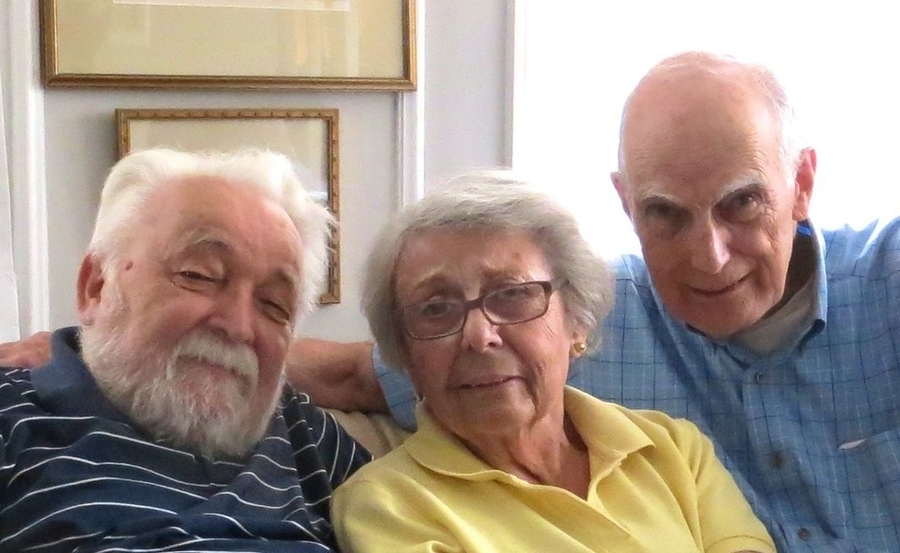On Sept. 18, at 4 p.m., in the MIT Marlar Lounge (37-252), two authors will talk about biographies they've written on two participants of World War II. Both works have ties to MIT.
Norma Olbert wrote about her husband Stanislaw Olbert, an emeritus pofessor of physics at MIT, in "The Boy from Lwów" (Create Space, 2014); Hale Bradt, an MIT emeritus professor of physics, wrote about his father, Wilber, in "Wilber’s War: An American Family’s Journey through World War II" (Van Dorn Books, 2015).
Stanislaw Olbert and Bradt both spent their entire professional careers as faculty in MIT’s Department of Physics and in MITs Kavli Institute for Astrophysics and Space Research — Olbert was an expert in interplanetary plasmas, and Bradt was an x-ray astronomer. Each participated in several space missions: Olbert participated in the famed Voyager missions that sent robotic probes to study the outer solar system, while Bradt helped launch the Rossi X-ray Timing Explorer satellite to observe black holes. Both were early members of noted physicist Bruno Rossi’s cosmic ray group at MIT.
Over the course of a 60-year marriage, Norma culled and wove into her book the facts of her husband's life, including his boyhood in a small village of eastern Poland, his experiences under both Russian and German occupation, joining the underground army and fighting in the momentous Warsaw uprising, and his life as a displaced person in Munich — from where he won a scholarship to MIT as a graduate student in physics. In addition to using her husband's reminiscences, Norma conducted extensive research to ensure that her history of Europe was accurate.
Stanislaw is now 92. Up until a few years ago, he was collaborating with John Belcher in educational projects.
Bradt became interested in his father Wilber's story in 1980 when he re-read some of his father’s letters from the Pacific Theater — an important area of warfare that included most of the Pacific Ocean and its islands — and found how richly literate they were. That sent him on a quest for more; he eventually collected about 700 letters his father wrote to his wife, parents, and children. These letters portray the broad scope of the Pacific war with insight, humor, and technical detail, according to Bradt. In the early 1980s, Bradt aggressively researched the story through interviews with participants and family members — many still living at the time — visits to the Pacific battlegrounds, and archival searches for documents and photographs.
Wilber was an army field artillery commander who was in three major campaigns during his full three years overseas. He was wounded twice and was awarded several medals for valor. Sadly, he took his own life shortly after returning home at the end of the war when Hale had turned 15. The story should resonate with families experiencing similar losses today, Bradt believes.
Bradt’s book is also about family on the home front. His mother took her children to New York City when Wilber was called to active duty to further her literary and musical ambitions. There she faced her own challenges. Bradt, through Wilber’s letters and his own investigations, was able to unravel his mother’s personal saga.
"Wilber’s War" is presented in three hardcover volumes in a slipcase, complete with 39 maps and 269 photos and facsimiles. Bradt, the author of two astrophysics textbooks, is publishing this one himself. He has signed contracts with an editor, a designer, a website developer, a printer, and a publicist. “Financially, it is like owning a large boat,” Bradt said. When asked what the project has meant to him, he said, “I have had the good fortune to come to know and understand my parents much better than most people do.”
Both books are available online and as e-books.






